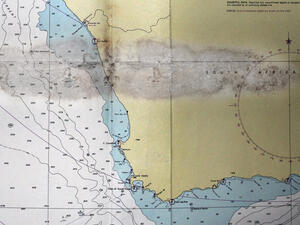
Originally called the Cape of Storms by its Portuguese discoverers, the Cape of Good Hope was so renamed in view of the opportunities opened to Europe by a sea route to India and the Far East. Since its late 15th century injection into hearts and souls, it has long remained of significance to sailors everywhere.
The Cape and Dassen Island
This rocky headland on the Atlantic coast is not Africa’s southernmost point, but rather its most south-western; the cape around which ships turn east after heading south for so long.
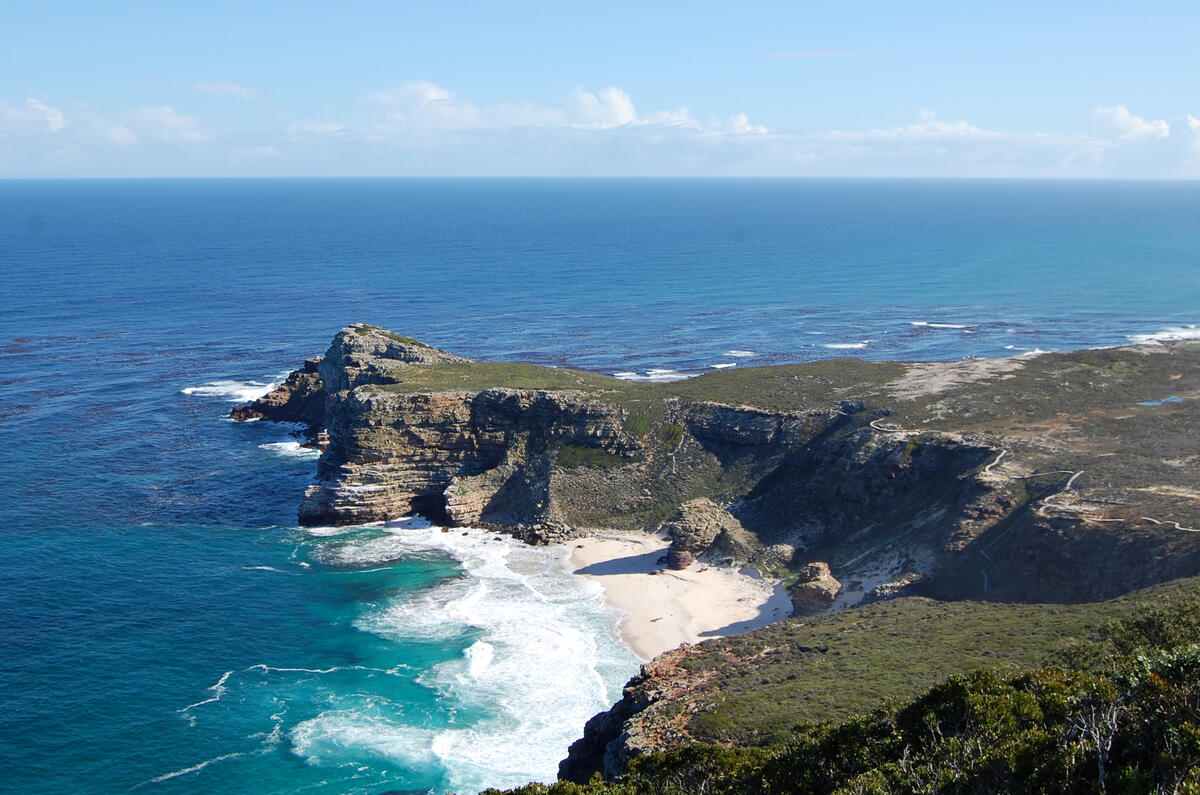
The sandstone continues the bulk of the mountains that range from Table Mountain some 50 km to the north, before plunging into the sea forever.
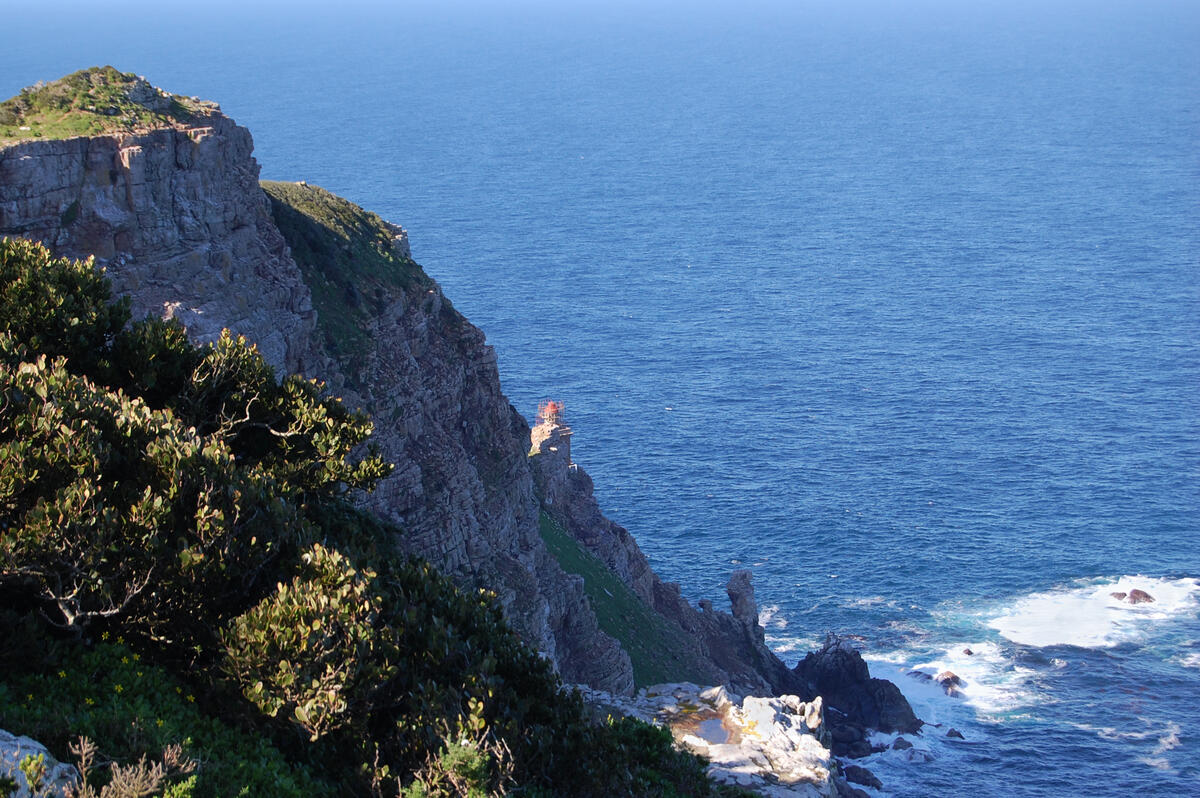
Two lighthouses mark the Cape. Many ships were lost on the nearby dangers due in part to the original lighthouse being positioned too high and consequently often being obscured completely in the area’s cloud and mist.
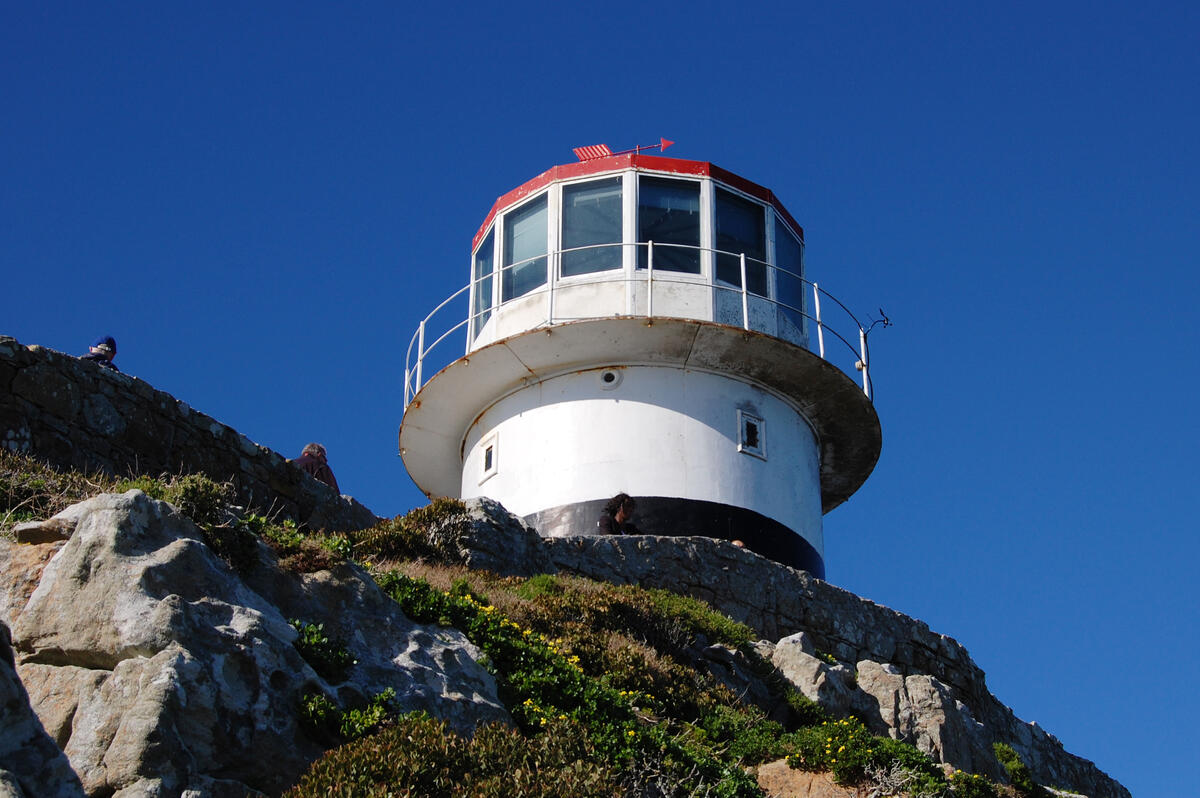
It was replaced in 1919, set lower down and built precariously on the razor back ridge.
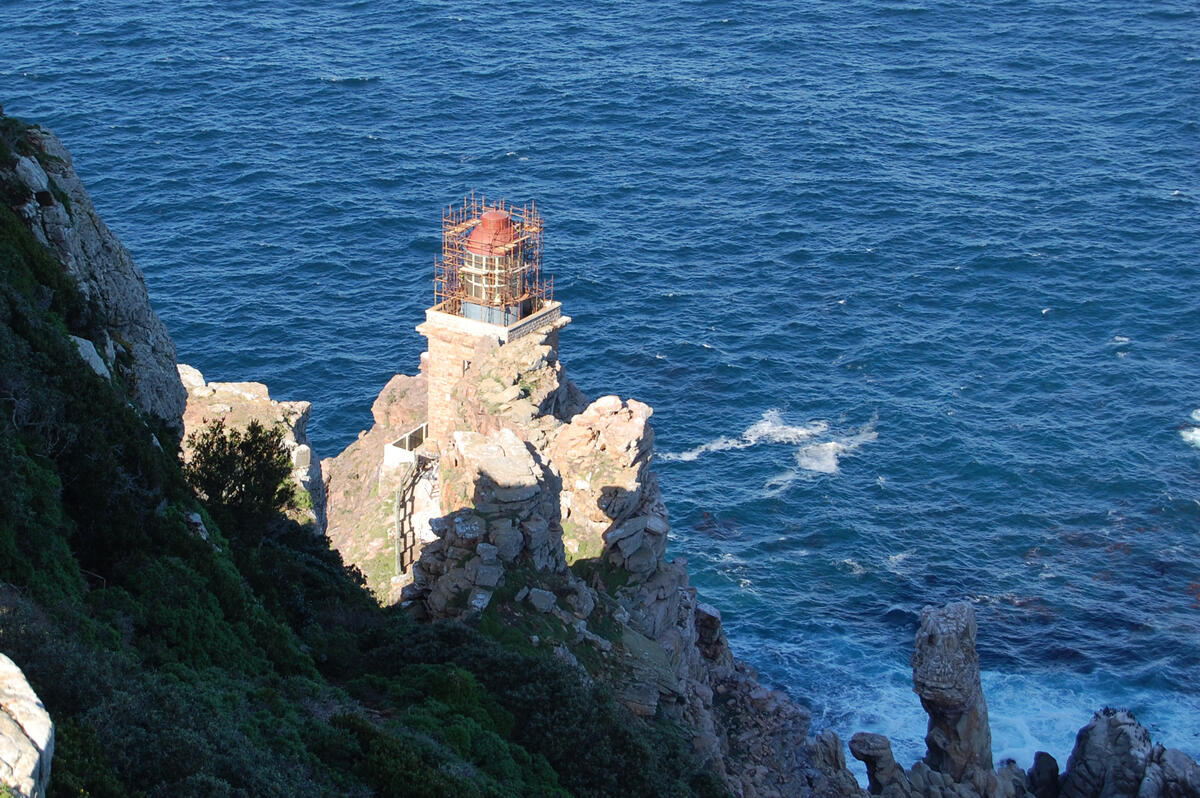
Our long term plans included a foray to the High Latitudes in the Northern Hemisphere, and visiting some of the more interesting southern African coast would shave some miles off the long passage. When it was time to leave Cape Town, we began coast-hopping.
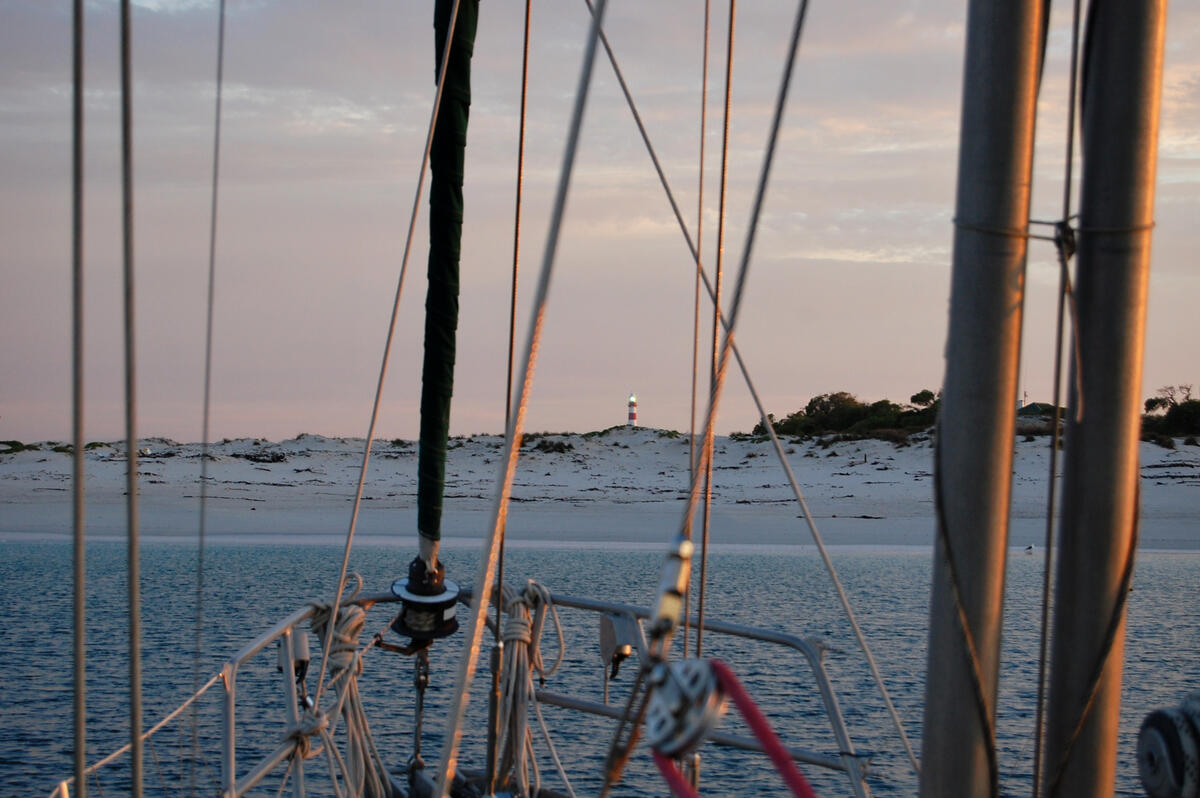
Dassen Island is a nature reserve found through 35 miles of fog north of Cape Town, fog which lifted after finding anchorage to reveal countless thousands of birds.
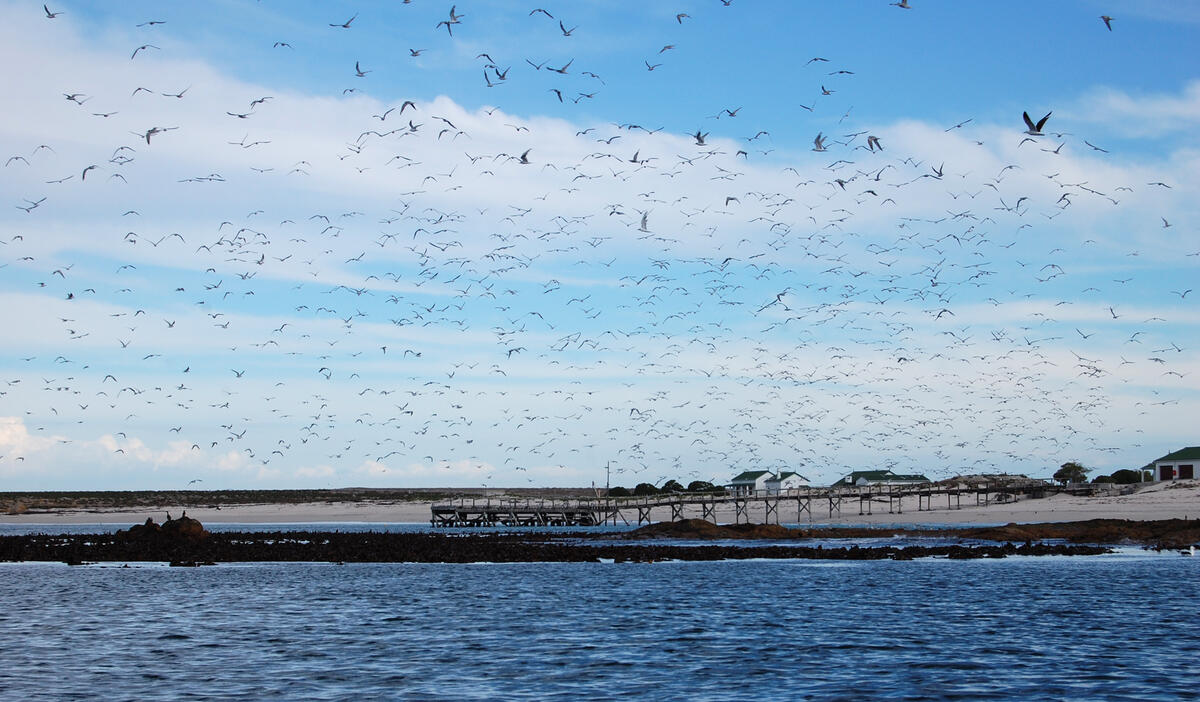
Dassen, from the plural of dassie, refers to colonies of rock hyraxes found by its discoverers. Landing on the uninhabited nature reserve is now prohibited.
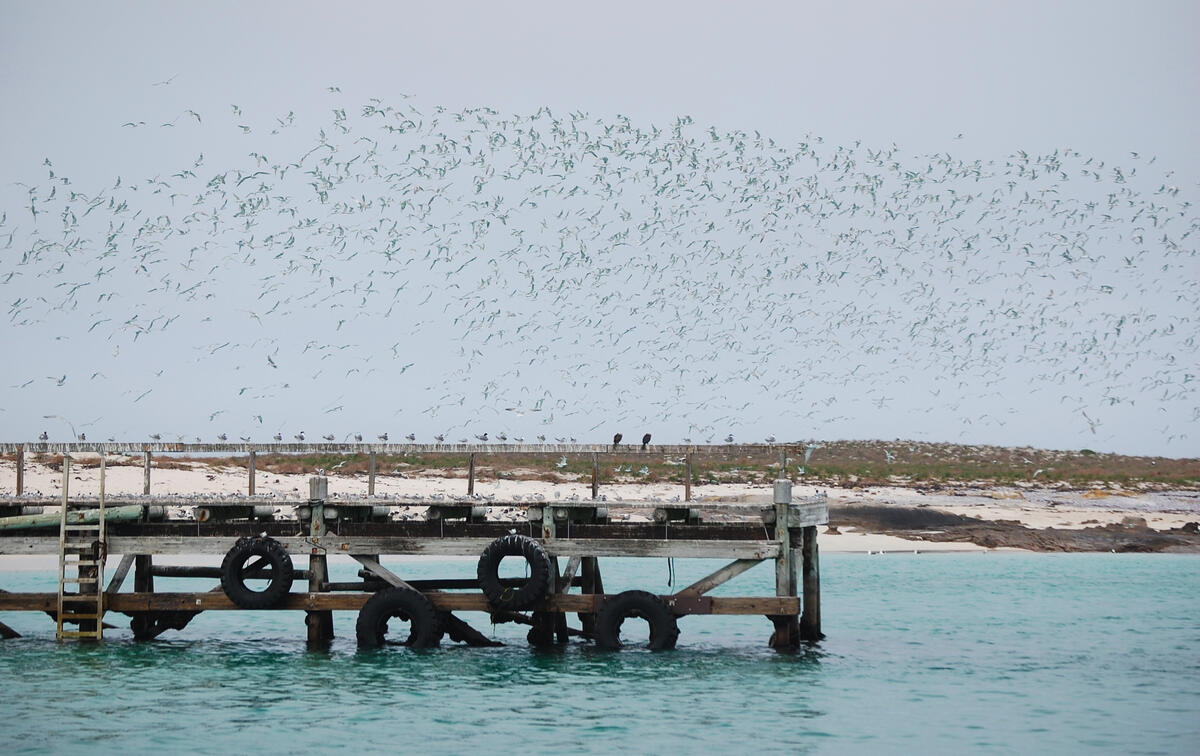
House Bay hosts dozens of seabird species and we spent several days onboard and rowing the dinghy around the bays simply taking in the spectacles.
The majority of these birds are arctic terns, on their migration north from Antarctica.
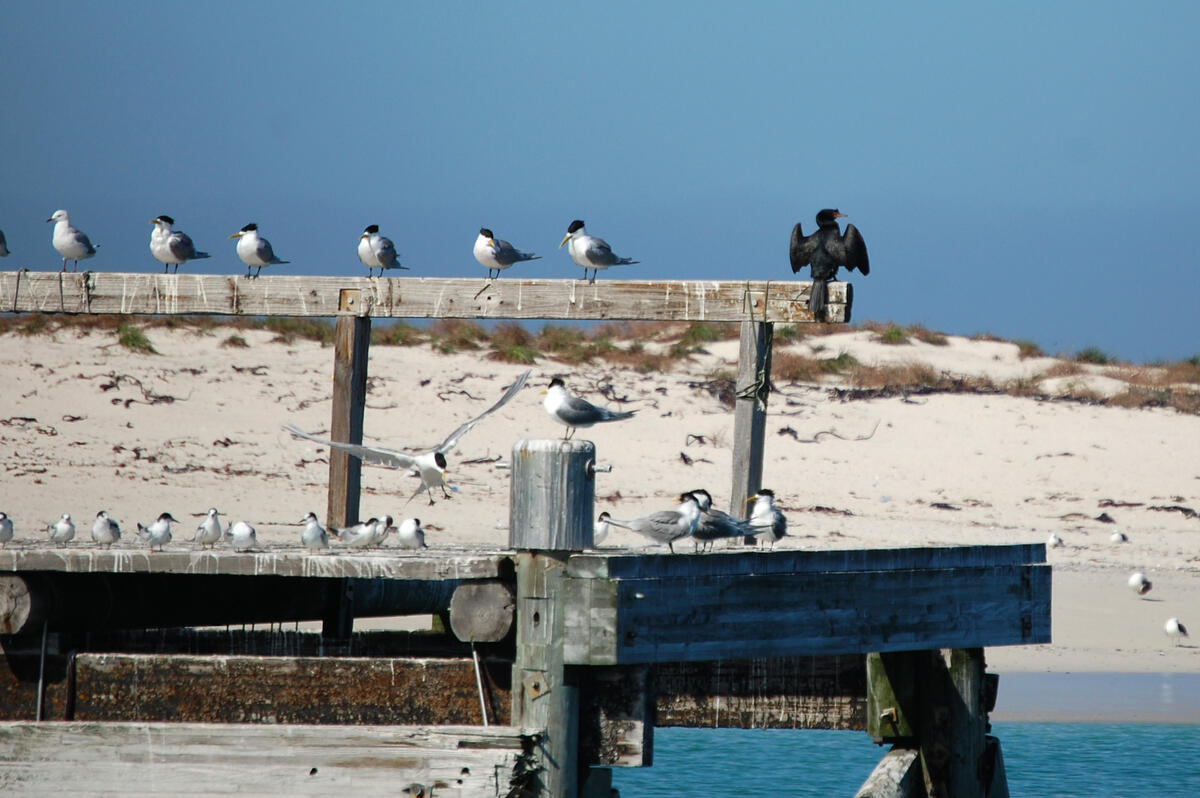
No dry land goes unused as cormorants roost on the rocks.
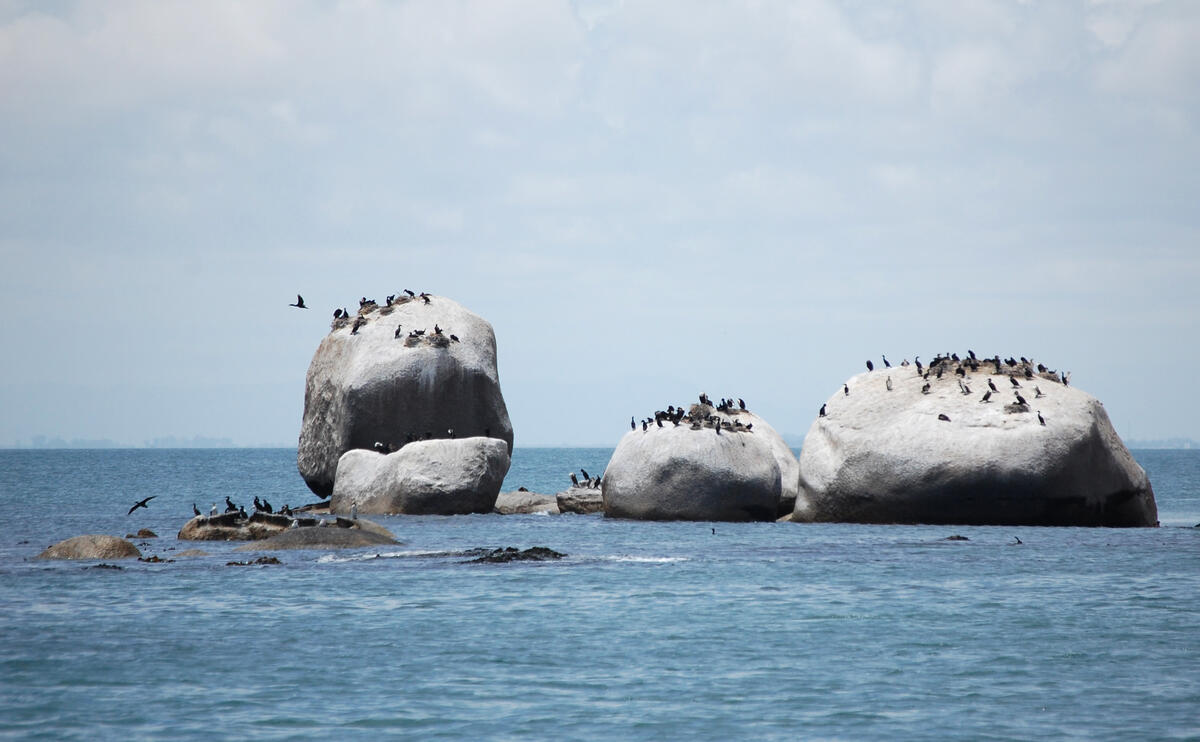
Rocks form protection for anchorage in St Helena Bay, a large bay back on the mainland coast and the last one before we headed north.
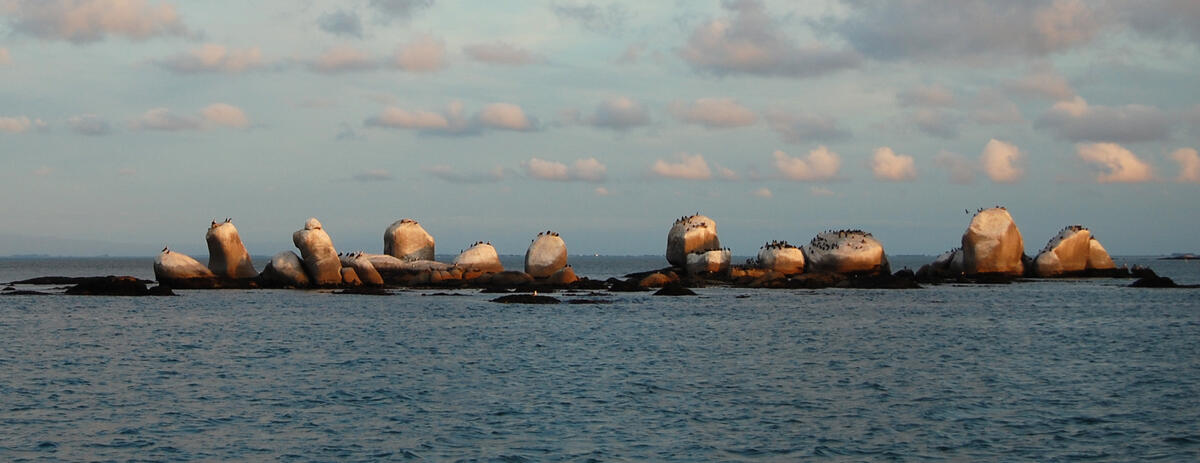
Up still farther and a line on a map is crossed – and the traveler enters a new land. Namibia and the Skeleton Coast will be another story.
